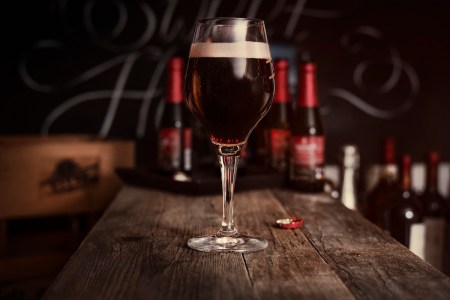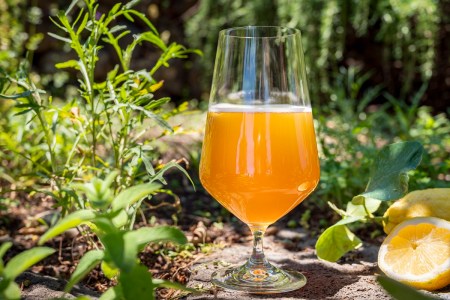
In her continuing series of Senses Working Overtime articles, sensory analyst Briony Liebich from Flavour Logic looks at how to approach tasting sour beers and why they are so popular.
A well-made sour can be a complex and enlivening beer experience. Perfect on a warm day, ideal with food and appealing to those seeking something different in their beer.
With the popularity of fermentation on the rise, sour flavours are now more prevalent – think homemade sourdough, kimchi, kefir and kombucha. In the last five years the number of sours entered in the Australian International Beer Awards has increased by almost 10 per cent, confirming the growth in their popularity.
With any beer style, the more you understand about key ingredients, history and what to expect on your palate, the more you can truly appreciate what’s in your glass.
Traditional sour styles have been made in Europe for hundreds of years, including Berliner Weisse and Gose in Germany and Belgian lambics like Gueuze, Flanders Red and Brown Ales. Brewers who love sours often cite Rodenbach Classic as their epiphany beer, a delightfully sweet and sour Flanders Red Ale and more wine-like than other beers.
How are sour beers made?
Wort is soured typically with wild bacteria and yeast in a mixed culture fermentation producing a tangy, yoghurt-like flavour. Lactic acid-forming bacteria are Lactobacillus and Pediococcus, while Brettanomyces is a wild yeast that can add acidity and diverse flavours including smoky, spicy, funky or barnyard. By adding fruit, the resulting beer is even more tart and lively due to citric acid in fruits like strawberry, cherry and peach.
There is a degree of unpredictability when brewing with additions, bottle conditioning, barrel ageing and blending a sour beer. The key is to keep an open mind. I’ve come across a wide range of fruit, spice and herb additions that are reminiscent of fruit desserts or even a spicy Thai salad. With any tasting process, it helps to break down a beer into what you see, smell, taste and feel (mouthfeel). Appearance of sours varies widely from fluffy dense foam to almost no foam at all. Colour and clarity also differ greatly depending on the fermentation process and any additional ingredients.
Flavour starts with aroma
So always smell your beer first to excite your palate. Your tongue can only perceive five basic tastes – sweet, sour, bitter, salty and umami. Our sense of taste evolved over millions of years to help us choose the safest foods to eat. We are naturally drawn to sweet as it implies energy. We like sour which provides healthy organic acids. Salty foods are an important part of our diet, but we developed the ability to discriminate bitter tastes to help us avoid toxins like poisonous plants. This could be why many people who don’t enjoy typical bitter beers are leaning towards sour beer styles.

On the palate
Sours can be any anywhere from tangy and mellow like yoghurt to incredibly tart causing your lips to pucker like you’ve sucked on a lemon. It’s all about balance. Sour beers have low pH (3.0 to 3.5) more like dry wine, adding to their ability to convince wine or traditional cider drinkers to cross-over into beer and find new styles to enjoy.
Tart and funky beers with food are a win-win. They can cut through salty, spicy or fatty dishes and enhance tangy foods like pickles and goat curd. Dry, fruity sours with lighter ABV and little or no bitterness are suited to dishes with fresh, simple ingredients like an omelette with goats curd or oysters with a squeeze of lemon. To enrich the tasting experience, I would serve in a tulip glass or champagne flute to help release aromas while preserving any head retention.
What’s next for sour beers?
Expect to see more and more experimentation with wild ales, barrel aging programs, smoothie sours (added fruit purée or lactose), imperial sours (higher ABV) and dry-hopped sours.
Remember to be aware of your senses and different perceptions you get when tasting. Can you find a sour style that hits the sweet spot for you?
Briony’s sensory column appears in every issue of Beer & Brewer. Subscribe here.

